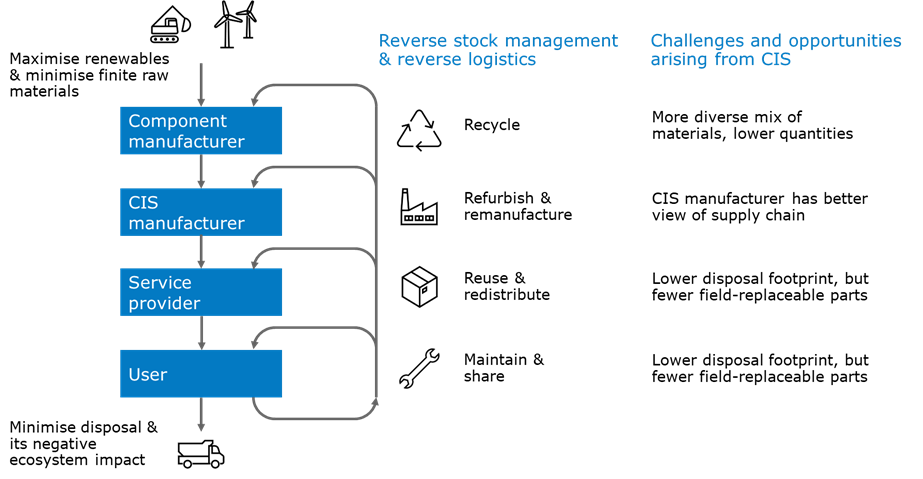Sustainability for CIS
Sustainability drivers and challenges
To meet their business and societal goals, organizations need to incorporate sustainability into CIS development. These goals include global climate change abatement and optimized resource utilization incorporating responsible usage of critical materials and services.
Central to this will be the implementation of a circular economy system model—creating an integrated approach to manage electronics systems from assembly through the use phase to the end of their first and second life, enabling efficient resource usage and planned material recovery. However, the high level of integration of heterogenous technologies in many CIS present two challenges:
Integration of a wide variety of technologies into more miniaturized subassemblies means that economic extraction of key materials for recycling becomes more difficult.
Typically in CIS, individual assemblies are highly customized which limits reuse and repurposing.
Opportunities
An integrated systems approach will drive development of standardized design and assembly guidelines including tracking of material and other resource usage. This facilitates more efficient flexible assembly capabilities development and, ultimately, easier recycling and reuse from electronic systems.
Implementing a CIS approach to manufacturing, with multiple capabilities integrated at one facility, will also enable faster development of relevant value-recovery matrix models and integrated, sustainability-focused, supply chains. The current piecemeal approach is not working.

Figure 1. Challenges and opportunities arising from CIS in circularity.
Diagram is based on the technical cycle in the Ellen MacArthur Foundation butterfly diagram1.
Enablers
System design practices will need to include end-of-life reuse and recycling as key objectives. Hardware designers will need a stronger understanding of disassembly and recycling processes to ensure economic and safe material extraction at end of life.
Data harmonization and transparency are key elements of ensuring sustainability knowledge through the lifecycle of the electronic system. A systems approach incorporating all the required data from design to end of life will enable the robust sustainability data models and flows needed in a resource and time-constrained industry responding to an ever-growing market of electronic systems applications.
Return to topic overview.
References
Ellen MacArthur Foundation, “The Technical Cycle of the Butterfly Diagram,” https://www.ellenmacarthurfoundation.org/articles/the-technical-cycle-of-the-butterfly-diagram, 2022.
